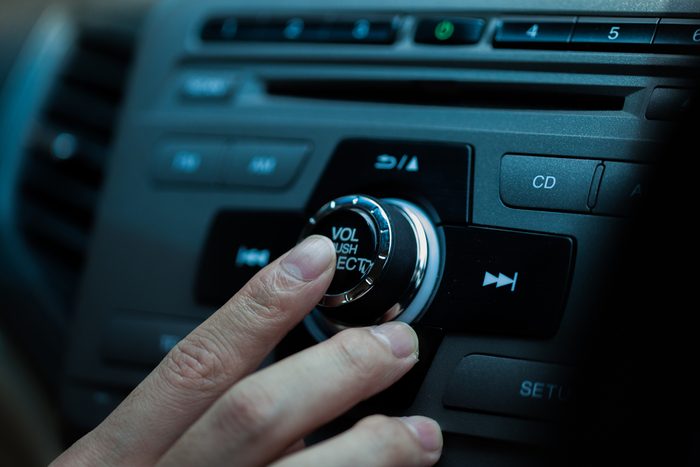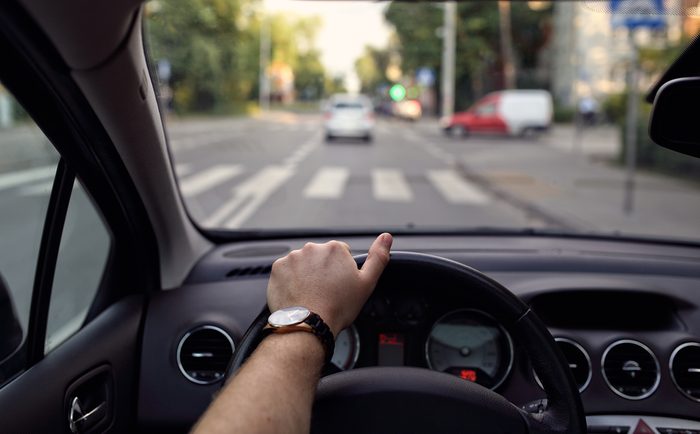
Feel like you spend half your life sitting in traffic? You’re not alone. Canadians are spending more time than ever before getting to and from work every day—on average, the equivalent of 12 full days every year, according to one Statistics Canada report.
Some 86 percent of Canadians drive either all the way or partway to work every day, and a quarter of us spend 90 minutes or more every day behind the wheel. It’s enough to induce road rage in even the meekest among us.
If driving through heavy traffic to work leaves you angry and frustrated, follow our road rules for a more stress-free commute.

1. Take public transit
It’s not the commute per se that is stressful, rather it’s the time we spend in the car, according to a study into commuters by researcher Dr. Meni Koslowsky from Barllan University in Israel. The stress we experience in the car comes from the issue of control. If you drive your car to work, part of the reason you do it is to feel that you’re in control. If you get stuck in traffic, you feel like you’ve lost control. By taking public transportation modes, you give up control of your commute. You won’t blame yourself for any delay or torture yourself about fixing the situation.

2. Create a selection of music just for the commute – one for going to work and one for relaxing on the way home
One study found that people who listened to music when stuck in traffic were less likely to get angry than those who didn’t listen to music.

3. Avoid rush hour any way you can
It’s such an obvious way to improve your commute, yet few people bother to find alternatives. So what are the viable ones?
- Seek a one-hour change in the time you start and end work.
- If your company has satellite offices that are closer to home, try to work there on occasion.
- Drive in before the crowds, and create a constructive before-work ritual for yourself, such as going to a gym, eating a leisurely breakfast, even running errands.

4. Lose the race mentality
Weaving and darting rarely gains you more than a few minutes – but it does increase your stress levels. Slow down and drive calmly – it’s more pleasant.

5. Learn while you drive
If you’ve always been meaning to learn to speak Spanish or read the latest bestsellers, here’s your chance. You can get books on CD from the library or subscription services, or download them onto your phone. Better yet, test out new podcasts. Even bumper-to-bumper traffic is bearable when you’re in the thick of an exciting true-crime podcast.

6. Get comfortable
That means more than just buckling up. Before you head out of the driveway, make sure your headrest is set directly behind your head, aligned with the top of your ears. Adjust your seat and steering wheel for better comfort. Check each mirror to ensure you don’t need to lean or crane your neck. Now strap up.

7. Manual or automatic transmission?
Answer: Automatic. The idea that you’ll burn more calories and less gas driving a stick just doesn’t hold up. Changing gears and pushing the clutch pedal doesn’t add up to exercise unless you’re driving a semi-trailer. New car automatic transmissions have become increasingly fuel-efficient. So from a stress standpoint, an automatic will make driving much easier.

8. Develop five alternative routes for your commute
This is about control. If you know you can go a different way, you have automatically given yourself more control over the situation.

9. Multitask via your earbuds
Set your radio to a news station to catch up on the world. And when you need to relax, put it on favourite music station. Our favourite thing: Podcasts.

10. Don’t be judgmental about other drivers
The thing about high-stress drivers is that when another driver passes them, they get angry. When someone is going slower than they are, they get angry. They get angry when others forget to signal, or if their car is larger, or their music is playing too loud. Let it go. Overreacting to other drivers is a sure pathway to stress, headaches and anger. The better approach: Be a defensive driver and never let what other drivers do bother you.

11. Relax before you get into the car
Try a leisurely breakfast – don’t force down a piece of toast on the run.

12. Leave 30 minutes earlier than normal
Studies find that the less sense of “time urgency” or worry about being late that you have, the less stressed out you’ll feel during your commute.

13. Try the route with the least stop-and-go traffic
Longer is better if traffic flows smoothly and you avoid lots of lights, turns and pedestrian crossings. For most of us, no form of driving is as stressful as trying to move quickly on crowded streets.
Adapted from Health Smart
